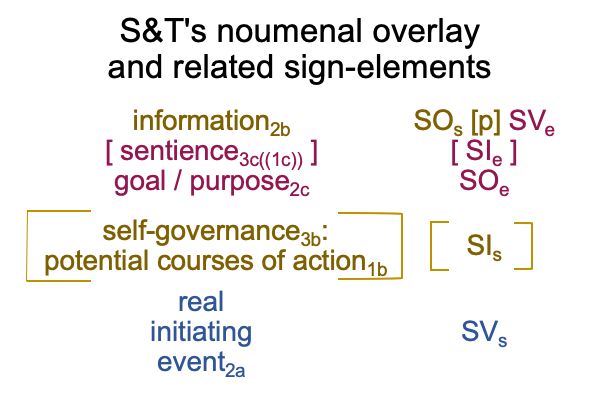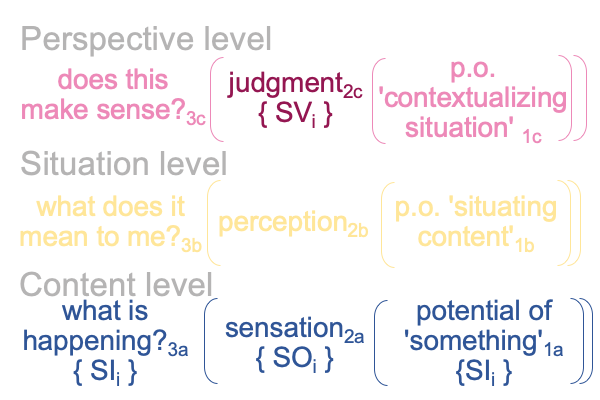0883 Here is a diagram showing the way that Sharov and Tonnessen bring a three-level interscope into a dyadic actuality suitable for laying over the noumenon of all biological processes.

Empirio-schematic inquiry into biosemiotics may now fruitfully employ this noumenal overlay as the thing that is objectified by biosemiotic phenomena.
0884 But, there is more.
The interventional sign-relation is difficult to fathom, because its sign-vehicle cannot be seen. It must be inferred. In biosemiotics, that inference represents phenomena. It is the goal2c as a sign-vehicle (SVi).
More on that in short order.
0885 Here is a picture of the interventional sign-relation within the scholastic interscope.

Before discussing the strangeness of the perspective-level sign-vehicle2c (SVi), I want to dwell on our (human) familiarity of the content-level.
What is more routine than asking the question, “What happening?”, as if this is a normal context3a operating on the potential of ‘something’ happening’1a?
The question asks for content, and the answer comes by way of sensation2a (SOi). For animals, sensations do not come packaged with loads of information. For humans, they do. A simple statement, like “Where did you put your token?”, which is really a question, gets rapidly decoded into the content-level {SOi}2a.
Yes, the SOi is a real element. The SVs is a real element. The contiguity between the two is [message].
That token (SVs) is a ticket to ride (SOs).
0886 The familiar character of the content-level SOi and SIi hides the unfamiliar nature of the perspective-level SVi.
What is going on with judgment2c {SVi}2c?
